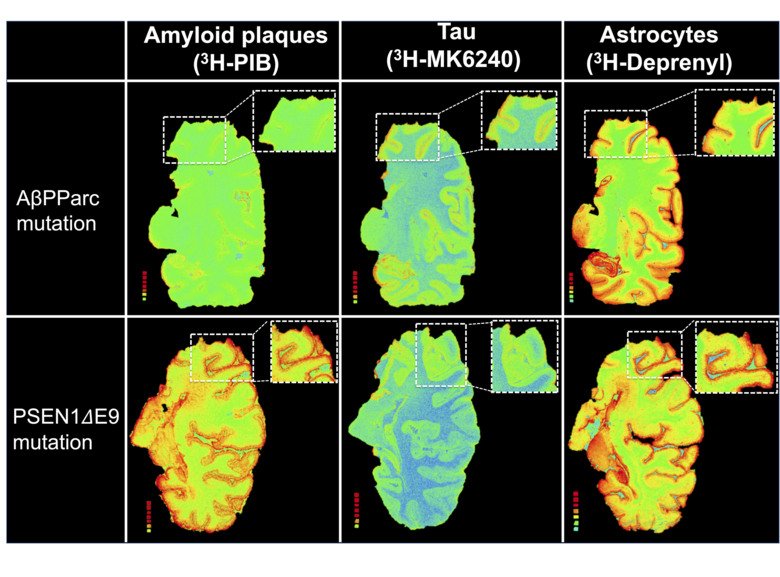Increased understanding of pathological changes in the brain in Alzheimer's disease
In a collaborative project between Karolinska institutet, Karolinska university hospital, Uppsala university and Turku university led by professor Agneta Nordberg, KI, has differences in pathological changes been studied using PET tracers in brain tissue from different genetic variants of hereditary Alzheimer's disease compared with sporadic Alzheimer's disease.
The results are published in Molecular Psychiatry and show that the presence of the characteristic amyloid plaques in Alzheimer's disease does not seem to be necessary for tau deposition and inflammatory changes in brain during disease progression. The results may have an impact for further drug development.
This study aims to a further understanding of the pathological processes in Alzheimer's disease (AD), the most common form of neurodegenerative disorder and dementia, Laetitia Lemoine first author of the publication tells us. It has a focus on amyloid plaques, tau deposition and inflammation processes (astrocytosis) as studied in postmortem brain tissues using different imaging PET biomarkers. Although most cases of AD are considered as sporadic forms and AD due to autosomal dominant mutations (ADAD) represents only a few percentages a crucial question is whether ADAD could be used as model for sporadic AD? In the present study we investigated two specific mutations, AßppArc and PSEN1DE9 mutations, which both show atypical amyloid plaques when ncharacterized by immunostaining: AβPParc with round shape plaques with no dense amyloid core and PSEN1DE9 with cotton wool plaques. The study includes brain tissue from two carriers of AβPParc mutations, one with PSEN1DE9 mutation as well as sporadic AD.
In this study we observed no specific binding of the amyloid PET tracer PIB in AβPParc cases using large hemisphere brain section autoradiography while in contrast there is high binding of the PIB tracer in the PSEN1DE9 case also in comparison to sporadic AD. Those results are aligned with in vivo study showing AβPParc carrier were 11C-PIB PET negative when PSEN1DE9 carriers were 11C-PIB PET positive. For the other imaging biomarkers, a high regional binding of tau PET tracers THK5117 and MK6240 as well a Deprenyl tracer for astrocytes was observed in both forms of ADAD as well as sporadic AD. A positive correlation was observed between the regional bindings of the tracer deprenyl (astrocytes) THK5117 (tau) in the AβPParc arc while not such correlation was observed for PSEN1DE9 case.

Our study demonstrates differences in the properties of the amyloid plaques between two genetic variants of AD and sporadic AD. Interestingly enough despite the lack of measurable amyloid fibrils by PET tracer PIB in the AβPParc cases high tau and astrocyte PET tracer binding was observed. This study underlines the observation that amyloid plaques are not needed for the progression of tau and inflammatory pathology as well as disease progression which must be important to take into account further for drug development in AD. The somewhat different pathology cascade observed between AβPParc and PSEN1DE9 variants of AD warrant further research.
Publication
Laetitia Lemoine, Per-Göran Gillberg, Nenad Bogdanovic, Inger Nennesmo, Laure Saint-Aubert, Matti Viitanen, Caroline Graff, Martin Ingelsson, Agneta Nordberg. Amyloid, tau and astrocyte pathology in autosomal dominant Alzheimer’s disease variants: AβPParc and PSEN1DE9. Molecular Psychiatry June 25th
Grants
The research has been finansiated by research grants from Swedish Foundation of Strategic Research (SSF), Swedish Research Council, the Stockholm County Council-Karolinska Institutet regional agreement on medical training and clinical research (ALF grant), Brain Foundation, Alzheimer foundation, CIMED, Foundatin for old servants, Loo and Hans Osterman´s foundation,Tore Nilsson foundation, Gunvor and Josef Arner foundation, the Swedish Dementia Association, KI foundation for geriatric diseases.
